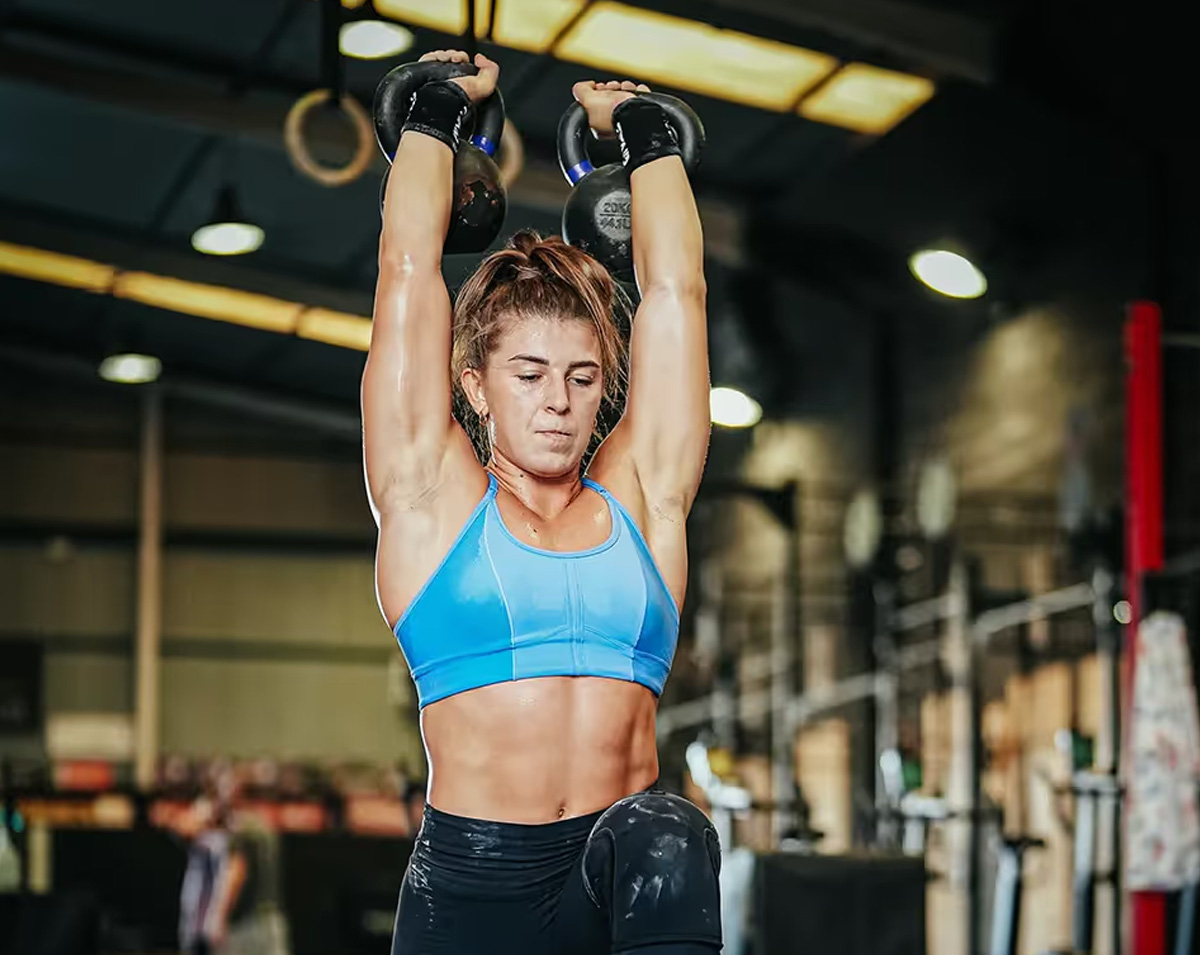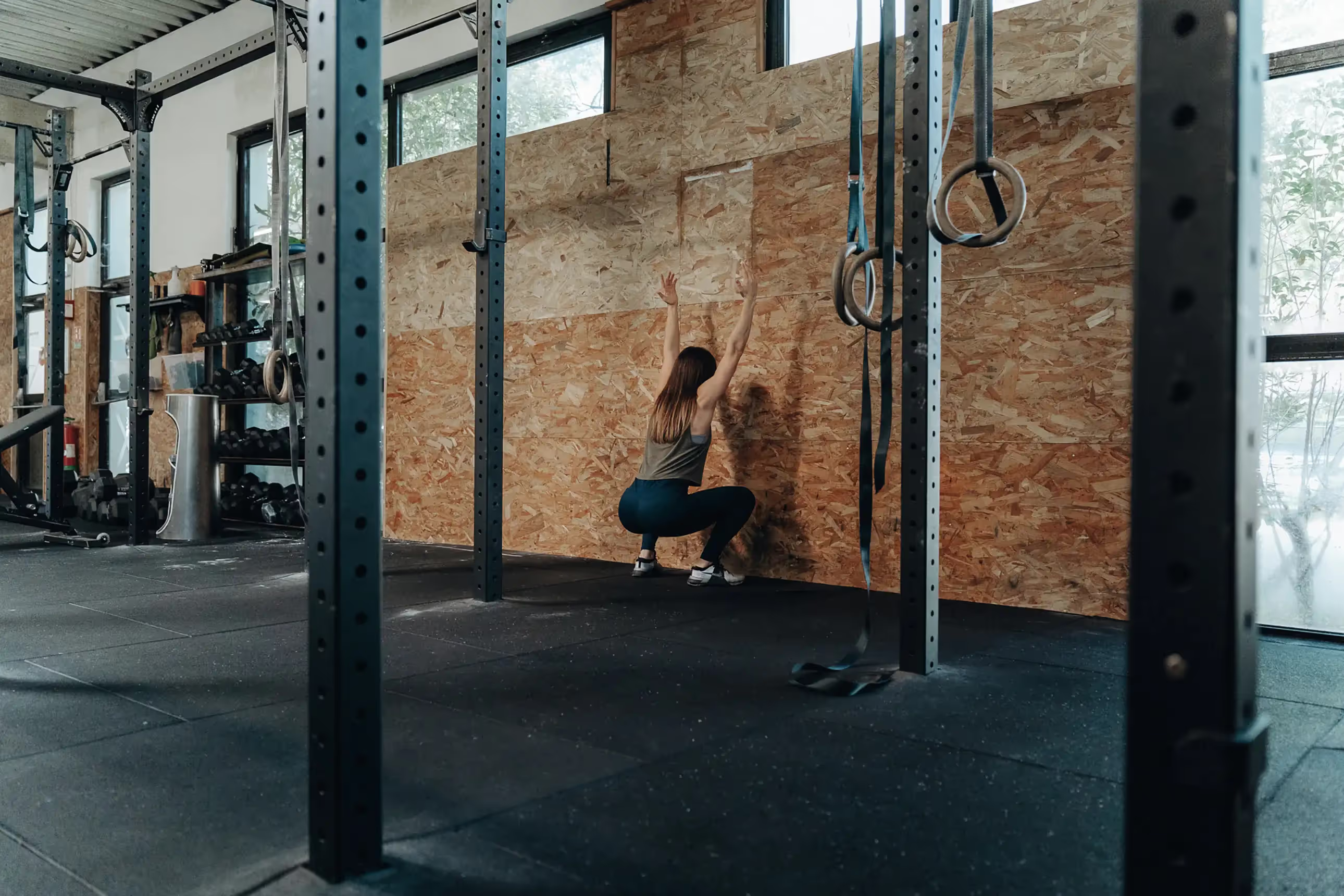
It is hard to overestimate the importance of overhead mobility in CrossFit. To hold weight overhead with control or support one’s bodyweight in a dynamic, inverted position requires not only shoulder strength and stability, scapular stability, and core strength but significant amounts of shoulder and thoracic spine mobility.
This article will predominantly explore ways to improve overhead mobility in the bottom overhead position, such as in the snatch or overhead squat, as this position is typically the most challenging overhead position from the perspective of mobility.

As with all mobility and performance challenges in CrossFit, the first step in addressing difficulty with the overhead position is to determine the sources of restriction. The GOWOD mobility test, which measures both flexibility and mobility of each body region based on their functions in CrossFit movements, is a great place to start!
The shoulder joint is formed by the humerus (arm bone) and glenoid fossa of the scapula (shoulder blade). As a ball and socket joint, the shoulder has a large range of motion (ROM), moving in all three planes. The joint formed by the clavicle (collar bone) and the scapula also plays a role in shoulder mobility and stability.

Many muscles contribute to the movement and stability of the shoulder. The rotator cuff is a group of 4 muscles that stabilize the shoulder, particularly during overhead movements, and rotate the humerus in the shoulder joint socket. The deltoid moves, stabilizes, and protects the joint. The trapezius stabilizes and moves the scapula, contributing to shoulder ROM and stability. The shoulder is further stabilized by other structures, including ligaments and tendons, the labrum, and the shoulder joint capsule.
Though the shoulder moves in all 3 planes, shoulder flexion (extending arm in front of body and overhead) and shoulder external rotation (outward rotation such as with opening a magazine) are the most important for holding a barbell overhead with stability.
The thoracic spine, or t-spine, is the middle region of the spine that spans from the base of the neck to the bottom of the ribcage. The thoracic spine is made up of 12 vertebrae and corresponding intervertebral discs, gel-like structures that absorb shock and allow for spinal mobility.

The joints of the thoracic spine work together to stabilize the trunk and facilitate movements in all 3 planes. In general, spinal mobility is most limited in the thoracic spine due to the structure of the ribcage. When it comes to holding weight in the overhead position with control, thoracic spine extension ROM is particularly important.
Mobility of the shoulder and the upper back are interconnected. To illustrate this point, reach both arms overhead, such as you might do to stretch first thing in the morning, and take note of your range of motion. Next, slouch and allow your spine to round forward. From this position, try to extend your arms overhead once again and notice the motion lost. Full thoracic extension is required to access all of one’s available shoulder ROM.

Difficulty holding a weighted barbell in the overhead position is often due to limited shoulder flexion and external rotation mobility. An individual with these limitations will have difficulty fully extending the shoulders while maintaining an upright torso, open chest, and extended elbows. Shoulder ROM can be limited by muscle tightness, stiffness of the joint itself, previous injuries and surgeries, muscle imbalances, and other factors.
Shoulder flexion ROM may be limited by tightness in the muscles of the shoulder, chest, and trunk. These include latissimus dorsi, teres major, pectoralis major, subscapularis, biceps, and trapezius. Meanwhile, shoulder external rotation ROM may be limited by tightness in the shoulder internal rotators or shoulder joint capsule, or by poor scapular mobility, thoracic spine stiffness, and upper quarter muscle imbalances. Popular GOWOD exercises that address restricted shoulder mobility include shoulder external rotation with pipe and banded overhead fixer.

Limited thoracic spine extension mobility is another common cause of difficulty holding load overhead and is frequently seen in conjunction with limited shoulder mobility. An individual with limited thoracic spine mobility will struggle to hold a barbell overhead while maintaining an upright torso. Restricted t-spine extension can be caused by restricted mobility of the joints of the thoracic spine, chest muscle tightness, upper quarter muscle imbalances, kyphosis (excessive forward curvature of the thoracic spine), previous injuries, and degenerative spine changes. Popular GOWOD exercises that address restricted thoracic extension mobility include wall squat and T-opener.

Poor scapular control can impact the overhead position. Holding a barbell overhead requires coordinated activation of the muscles that move and stabilize the scapula. When these muscles are weak, it becomes very challenging to hold a barbell in the overhead position. Try GOWOD’s overhead activation exercise to improve scapular mobility and stability.
Lack of core muscle stability results in difficulty controlling weight overhead and maintaining an upright torso in the overhead position. The core connects the upper and lower body and serves to transfer force between the two regions. Therefore, core stability is critically important for the performance of movements such as the overhead squat and snatch.
The overhead position, particularly the bottom overhead position, is an important and challenging movement pattern. Improving overhead position has the potential to improve performance across multiple domains within CrossFit training, including weightlifting and gymnastics.
All bodies are different, with unique abilities and limitations. As such, identifying and treating an individual’s specific limitations will result in the most significant performance improvements. We at GOWOD have noticed themes when working with athletes to improve the bottom overhead position. Many male athletes will see improvements in their overhead position by opening the ribcage and thoracic spine and addressing tightness of the anterior shoulder musculature (pectorals and biceps). Try back roll in overhead position, upper pec stretch, and overhead squat on wall to address these limitations. For many female athletes, the bottom overhead position is most impacted by the ability to generate tension in the posterior chain to rise from out of the squat. Overhead activation is a great exercise to address this source of limitation.
Interested in a personalized mobility plan to address overhead range of motion? Try GOWOD now.
Take our FREE mobility and flexibility test to identify your strengths and areas for improvement. In minutes, get a detailed breakdown of each body zone with insights and personalized guidance to progress.
You’re only 3 steps away from unlocking your full potential.
